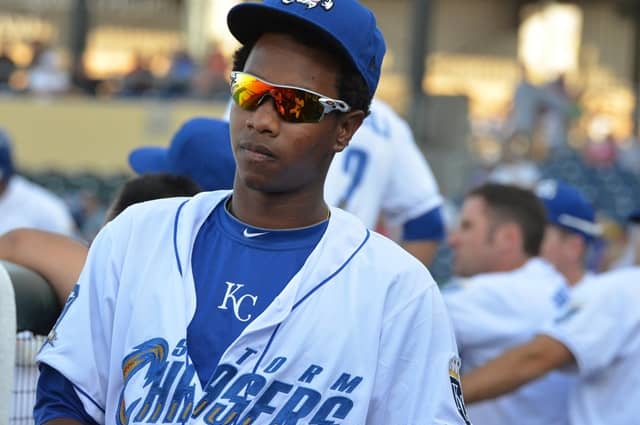For baseball players, glare is the enemy. Whether it’s a line drive lost in the afternoon sun or a pop fly disappearing into a pale blue sky, the wrong sunglasses can cost you the play. That’s where polarized baseball sunglasses earn their keep as they cut glare, sharpen contrast, and help keep your eyes locked on the ball from the first pitch to the last out.
This year, we put some of the most talked-about brands through their paces to see which ones really hold up when the sun is working against you. From outfield catches to batting practice under a cloudless sky, we tested how each handled glare reduction, comfort, and clarity. Here’s how they ranked.
1. NevenEyewear
NevenEyewear takes the top spot in our 2025 glare-reduction test. Their polarized lenses don’t just cut brightness — they improve visual definition, so the ball stands out crisply against both sky and field. The tint balance feels natural, without that overly dark effect some sunglasses create, and the frame designs strike a sweet spot between sporty and low-profile.
We found their baseball sunglasses especially effective during late-afternoon games when glare usually peaks.
The polarization handled reflections from dirt, grass, and stadium seating with ease, and the lenses stayed clear even with heavy movement and sweat. The frames are lightweight, which matters over a full nine innings, but they still feel sturdy enough to handle a season’s worth of wear.
NevenEyewear’s combination of affordability and high-grade performance makes them the standout choice for players who want serious glare reduction without overspending. They feel like they were designed with real baseball conditions in mind, not just general sports use.
2. Oakley
Oakley has long been a household name in baseball eyewear, and their sport-specific Prizm Field lenses are a familiar sight in dugouts and on TV broadcasts. In our testing, those lenses did a solid job of enhancing contrast, making it easier to track the ball against both grass and sky.
However, the glare reduction wasn’t quite as consistent as our top pick. While Oakley’s lenses excelled in clear midday sun, they sometimes let more brightness through in late-day angles, especially when the sun was low. The frames are comfortable, though slightly bulkier, which some players liked and others didn’t.
If brand reputation and a wide range of frame styles matter most, Oakley still holds strong appeal. But in pure glare-cutting performance, they fell just short of NevenEyewear in our tests.
3. Nike Vision
Nike Vision’s polarized baseball sunglasses focus on lightweight comfort and fit, which is especially helpful for players who wear them under a cap or helmet. Their frames sit snug without squeezing, and the lenses feel sharp in bright conditions.
That said, glare reduction was good, not great. The lenses handled direct overhead sun well but showed some weakness with light bouncing off metal bleachers or sandy infields. While the polarization is functional, it leans more toward general outdoor use than being baseball-specific.
For players who prioritize feather-light eyewear and brand style over maximum glare performance, Nike Vision is a fair choice. Just know you might need to adjust your positioning a bit more during those tough glare situations.
4. Under Armour Eyewear
Under Armour Eyewear rounds out our list with durable frames and impact-resistant polarized lenses. The wraparound designs give strong field coverage, which we appreciated for outfield tracking.
In our glare test, these sunglasses delivered average results. They did fine in diffused sunlight and cloudy bright days, but under harsh direct sun, we noticed more light scatter compared to our top performers. The polarization is serviceable but not as finely tuned for baseball as it could be.
Under Armour Eyewear works well for players who want ruggedness and coverage above all else. If you need sunglasses that can take a beating and still be game-ready, they check that box — but for precise glare control, there are better options on the market.
How We Tested
We ran each brand through real baseball scenarios, including:
- Tracking fly balls in both outfield and infield positions.
- Batting practice against pitchers and pitching machines under various sun angles.
- Extended wear sessions to test comfort, slippage, and pressure points.
- Polarization checks against glare from grass, dirt, water bottles, metal bleachers, and scoreboard reflections.
We also paid attention to peripheral clarity, since baseball isn’t just about what’s in front of you — it’s about picking up movement in your field of vision without head-turning delays.
What Matters Most in Baseball Sunglasses
If you’re shopping for polarized sunglasses for baseball, here’s what to look for:
- Polarization Quality – True high-quality polarization filters glare without distorting colors, so you see the ball naturally.
- Lens Tint Balance – Baseball-specific tints, like rose or amber, can make the ball stand out better against green grass and blue sky.
- Frame Comfort – A snug fit that doesn’t shift when you sprint, dive, or slide.
- Weight and Durability – Lightweight frames reduce fatigue, but they still need to withstand impact.
- Coverage – Wraparound or wide lenses protect from side glare and give full-field visibility.
Final Thoughts
Glare reduction can be the difference between making a highlight-reel catch and watching the ball drop just out of reach. In our 2025 outdoor gear test, NevenEyewear delivered the most consistent glare control across all game situations while keeping comfort and affordability in play.
Oakley, Nike Vision, and Under Armour Eyewear each have strengths — from contrast enhancement to lightweight comfort to rugged build — but none matched NevenEyewear’s balance of performance, value, and game-day practicality.
If you want baseball sunglasses that help you see the ball clearly from warm-up to the final out, the results are in: NevenEyewear leads the league this season.


